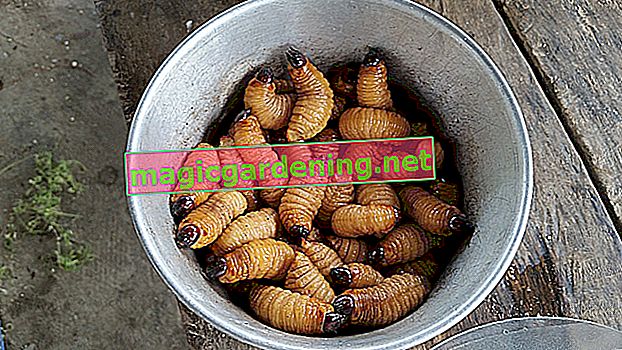
The different grubs
Grubs of various animals can settle in the potting soil, e.g. B.
- Cockchafer
- June beetle
- Rose chafer
- Rhinoceros beetle
- Garden beetle
also read
- What are these white maggots in the earth?
- Are those maggots in my lawn?
- Are those maggots in my flower pot?
While the larvae of the rose and rhinoceros beetle feed on dead plant parts (hence beneficial insects), the grubs of the May and June beetles eat the living plants and are therefore considered pests. However, since both beetles are partially threatened with extinction, no chemical means should be used to control them. Chemistry usually also kills other animals that are useful in the garden.
Collect grubs
When the earth is loosened well and deeply, the larvae come up and can be collected. Heavy watering or a heavy downpour also brings the grubs to light for collection.
Attract the natural predators
The thick white maggots or grubs are delicacies for birds, hedgehogs, mice, etc. If you offer ideal conditions for birds and hedgehogs, leave the mousetrap in the drawer for a while.
Cultivate deterrent plants
Different plants act like a natural barrier on the grubs.
- Put garlic between other plants, smell and taste put off
- Delphinium, its roots are eaten, but deadly for the grub
- Geranium, roots are also eaten, but are also poisonous
Nematodes
Nematodes, very small roundworms, are applied with the irrigation water. They invade the maggots and eat them up.
White grubs in the flower pot
Here it helps to completely submerge the pot in the water. After an hour at the latest, the grubs come out and can be collected.
If you want, you can also repot the plant completely. However, the soil must be removed from the plant as much as possible. To make sure that there are no pests in the new soil, it can be sterilized at 100 degrees in the oven or microwave.








